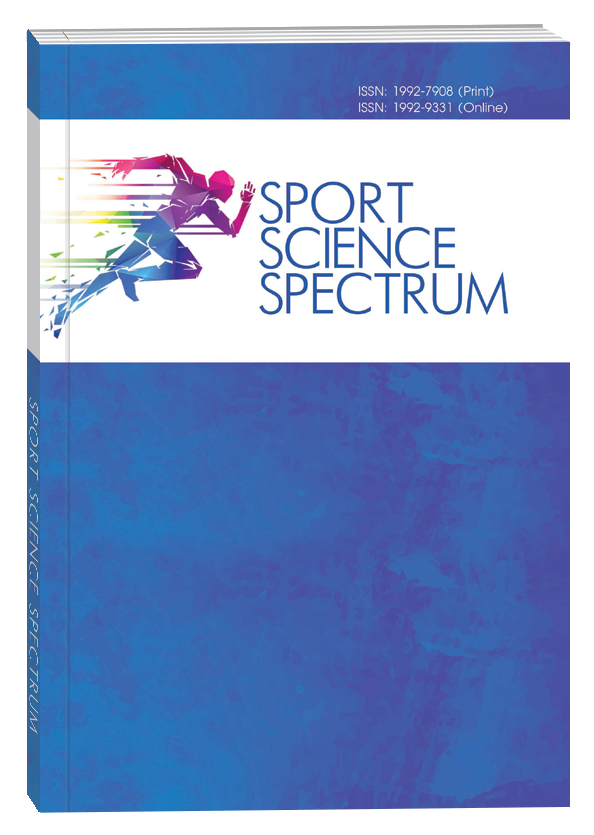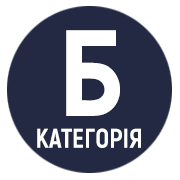ORGANISATIONAL INTERACTION IN SPORTS: MANAGERIAL APPROACHES AND CHALLENGES IN CONTEMPORARY CONDITIONS
DOI:
https://doi.org/10.32782/spectrum/2024-3-8Keywords:
subject, children’s and youth sports, sports management, market, economyAbstract
Introduction. This article explores the organisational conditions that impact the development of entities involved in youth sports within a market economy. The modern market environment imposes new demands on the organisation and operation of sports institutions, requiring both athletic success and economic efficiency. The interaction between various youth sports entities plays a crucial role in ensuring the sustainable development of this sector. Analysing these interactions and identifying favourable organisational conditions is a pertinent task, as they are essential for the quality training of young athletes, their physical and psychological development, and the achievement of high sports results and economic benefits. Research Aim. The study aims to identify and assess the impact of organisational factors that foster the development of youth sports in a market environment, with a focus on evaluating the effectiveness of interactions among participants in the sports field. Methods. The study utilised general scientific methods, including monographic analysis, synthesis, systematic approach, deduction, and generalisation. Results. The organisational conditions for developing youth sports entities within a market environment were analysed, considering sports as a management object. Critical aspects of interaction among various entities within the youth sports system were examined, and essential organisational conditions for this system’s effective operation and growth were identified. Special attention was given to management approaches that consider the specific nature of youth sports and enhance the interaction among entities within a market economy. The article addresses existing challenges in organisational interaction and proposes ways to overcome them, aiming to create an efficient and sustainable youth sports system. The analysis is based on theoretical frameworks and practical experience. Conclusions. The study’s findings underscore the significance of organisational conditions and effective interaction among youth sports entities for successful development in a market environment. The results can serve as a foundation for future research on developing recommendations to improve organisational mechanisms, enhance the efficiency of youth sports entities, and create favourable conditions for developing this sector.
References
1. Грибан Г.П. Управління у сфері фізичної культури і спорту : методичні рекомендації. Житомир : Вид-во «Рута», 2022. 124 с. URL: http://surl.li/byxwuf
2. Літовцева В.Є., Ворона В.В. Визначення впливу комерціалізації на розвиток виду спорту «стрільба з лука» в Україні. Олімпійський та паралімпійський спорт. 2023. № 3. С. 35–42. URL: https://doi.org/10.32782/olimpspu/2023.3.8
3. Руда Х.І., Ситник Л.С. Джерела фінансування інвестиційних ресурсів. Вісник студентського наукового товариства ДонНУ імені Василя Стуса. 2021. Т. 2, № 13. С. 254–257. URL: https://jvestnik-sss.donnu.edu.ua/article/view/11285
4. Солопенко В.В. Видатки на розвиток фізичної культури та спорту з державного та місцевих бюджетів: правові аспекти. Актуальні проблеми вітчизняної юриспруденції. 2018. № 3. С. 146–150. URL: http://apnl.dnu.in.ua/3_2018/33.pdf
5. Ціпов’яз А.Т., Бондаренко В.В. Організація і управління фізичною культурою і спортом : навч. посіб. Кременчук : КПК, 2019. 128 с. URL: http://surl.li/nkgved
6. Щур Я.О. Проблеми розвитку спорту для всіх в Україні: квал. робота … бакалавра : 017. Київ, 2023. 72 с. URL: http://surl.li/melajl
7. Abrahamyan L.S. Interaction of management and economics in improving the efficiency of the development of the sports industry. Indonesian Journal of Sport Management. 2023. Vol. 3, no. 1. P. 101–107. URL: https://doi.org/10.31949/ijsm.v3i1.4535
8. Acquah-Sam E. Developing sports for economic growth and development in developing countries. European Scientific Journal. 2021. Vol. 17, no. 5. P. 172–216. URL: https://doi.org/10.19044/esj.2021.v17n15p172
9. Bácsné Bába É., Szabados G.N., Orbán S.G., Bács Z., Balogh R., Kovács S. Business strategy of for-profit-oriented sports enterprises in Hungary. International Review of Applied Sciences and Engineering. 2024. Vol. 15, no. 3. P. 413–423. URL: https://doi.org/10.1556/1848.2024.00821
10. Blind K. The impact of regulation on innovation. Handbook of Innovation Policy Impact. Cheltnem : Edward Elgar Publishing, 2016. P. 450–482. URL: https://doi.org/10.4337/9781784711856.00022
11. Brenner J.S., Watson A. Overuse injuries, overtraining, and burnout in young athletes. Pediatrics. 2024. Vol. 153, no. 2. Article number e2023065129. URL: https://doi.org/10.1542/peds.2023-065129
12. Bruhn M., Rohlmann P. Product and service aspects in sports marketing. Sports Marketing. Wiesbaden : Springer, 2022. P. 37–47. URL: https://doi.org/10.1007/978-3-658-39122-5_4
13. Davids K., Rothwell M., Hydes S., Robinson T., Davids C. Enriching athlete-environment interactions in youth sport: The role of a department of methodology. Children. Base,. 2023. Vol. 10, no. 4. Article 752. URL: https://doi.org/10.3390/children10040752
14. Jedlicka S.R., Harris S., Reiche D. State intervention in sport: A comparative analysis of regime types. International Journal of Sport Policy and Politics. 2020. Vol. 12, no. 4. P. 563–581. URL: https://doi.org/10.1080/19406940.2020.1832134
15. Mitic P., Stojiljkovic N., Arsić I. Overtraining in student-athletes: Do coaches and parents “push too hard?” Facta Universitatis, Series: Teaching, Learning and Teacher Education. 2020. Vol. 4, no. 1. Article 027. URL: https://doi.org/10.22190/FUTLTE2001027M
16. Morality and values in sports among young athletes: The role of sport type and parenting styles – a pilot study / Yaffe Y., Levental O., Arey D. L., Lev A. Frontiers in Psychology. 2021. Vol. 12. Article 618507. URL: https://doi.org/10.3389/fpsyg.2021.618507
17. Partnerships and networks in work with young people. The Open University. URL: http://surl.li/dqzzye
18. Rakašius T. Assessment of the communication of the football club on social networks. Humanities Studies. 2023. No. 15 (92). P. 84–88. URL: https://doi.org/10.32782/hst-2023-15-92-10
19. Shkolnyk I., Kozmenko O., Nowacki R., Mershchii B. Dependence of the state of public finances on their transparency and the level of corruption in a country. Economics and Sociology. 2020. Vol. 13, no. 4. P. 281–296. URL: https://doi.org/10.14254/2071-789X.2020/13-4/18
20. The commercialization of youth sports. University of Kansas – School of Education and Human Sciences. URL: http://surl.li/wpeusq
21. The use of technological innovations in sport / Turcu I., Bogdan B., Diaconescu D., Mirela Sh., Barbu M., Popescu M., Tohaneanu A. A. A. Series IX Sciences of Human Kinetics. 2021. Vol. 14, no. 1. P. 107–116. URL: https://doi.org/10.31926/but.shk.2021.14.63.1.14





